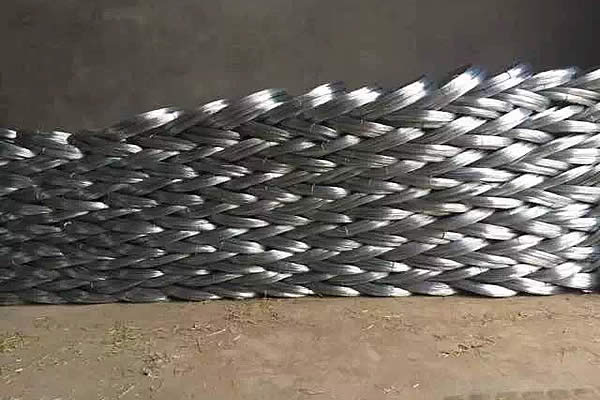 TEL:
+86-13102802206
TEL:
+86-13102802206
 Email:
fencenetting@china.com
Email:
fencenetting@china.com
 Language
Language
 TEL:
+86-13102802206
TEL:
+86-13102802206
 Email:
fencenetting@china.com
Email:
fencenetting@china.com
 Language
Language


The Beauty and Functionality of Decorative Gabion Walls
In the realm of landscaping and architectural design, the use of materials that blend aesthetic appeal with practical functionality has become increasingly popular. One such innovative solution is the gabion wall. Traditionally used for erosion control and structural support, gabion walls have evolved in contemporary design to serve as decorative elements that enhance outdoor spaces’ beauty. This article explores the various aspects of decorative gabion walls, highlighting their benefits, design versatility, and environmental impact.
Understanding Gabion Walls
Gabion walls are wire mesh cages filled with stones, rocks, or other materials. The word “gabion” originates from the Italian “gabbione,” meaning “large cage.” These structures have been used for centuries, primarily in civil engineering and erosion control. However, as landscaping trends evolve, gabion walls have gained popularity for their unique visual appeal and adaptability, making them a favorite choice for residential and commercial properties.
Design Versatility
One of the most attractive features of decorative gabion walls is their versatility in design. They can be customized in various shapes, sizes, and configurations to suit the landscape's unique specifications. Whether it’s a low garden wall, a towering privacy screen, or a stylish seating area, gabion walls can be tailored to fit any project.
The aesthetic appeal of gabion walls can be further enhanced by varying the fill materials. While traditional stone fillings are commonly used, homeowners and designers can opt for different materials such as colored glass, recycled concrete, or even natural elements like wood or driftwood. This variety allows for creative expression, enabling the construction of uniquely designed walls that complement the surrounding environment.
Environmental Benefits
Beyond their attractive appearance and functional aspects, decorative gabion walls offer significant environmental benefits. They are often made from natural, sustainable materials and provide effective drainage solutions. The gaps in the wire mesh allow water to flow through, reducing runoff and promoting groundwater recharge. This permeability decreases the risk of flooding, making gabion walls a sustainable choice for stormwater management.

Additionally, gabion walls can promote biodiversity. When filled with natural stone, they provide habitats for various organisms, including insects and small wildlife. Over time, plants can grow through the gaps, further enriching the ecosystem. The integration of nature into landscaping encourages resilience and supports local flora and fauna, ultimately benefiting the environment.
Cost-Effectiveness
From a financial perspective, decorative gabion walls offer an economical alternative to traditional fencing or retaining walls. The materials required can often be sourced locally, significantly reducing transportation costs. Furthermore, the installation process can be straightforward, allowing homeowners to undertake the project themselves without the need for specialized equipment or extensive labor.
While the initial investment may vary, the long-term benefits, including durability and low maintenance requirements, make gabion walls a cost-effective solution for any outdoor project. Unlike wood or concrete, which may deteriorate over time, gabion walls are resilient against weather conditions and do not require frequent repairs.
Aesthetic Appreciation
Ultimately, one of the most compelling reasons for choosing decorative gabion walls lies in their sheer beauty. They can act as stunning focal points in gardens, parks, or commercial areas, seamlessly blending functionality with artistic expression. The natural textures and colors of the stone create a rustic charm that complements various architectural styles, from modern minimalist to traditional.
Additionally, gabion walls can be illuminated with integrated lighting, enhancing their visual impact during nighttime while providing safety and security. As landscape lighting trends continue to grow, incorporating lighting into gabion designs becomes a popular way to create ambiance and highlight the structure's unique features.
Conclusion
In summary, decorative gabion walls offer a harmonious blend of practicality and aesthetics. Their versatility in design, environmental benefits, cost-effectiveness, and visual appeal make them an excellent choice for anyone looking to enhance outdoor spaces. Whether used as retaining walls, privacy screens, or artistic installations, gabion walls stand as a testament to the beauty of nature and innovative design, inviting admiration and appreciation from all who encounter them. As we continue to seek sustainable and aesthetically pleasing solutions for our landscapes, decorative gabion walls will undoubtedly hold a prominent place in the future of outdoor design.